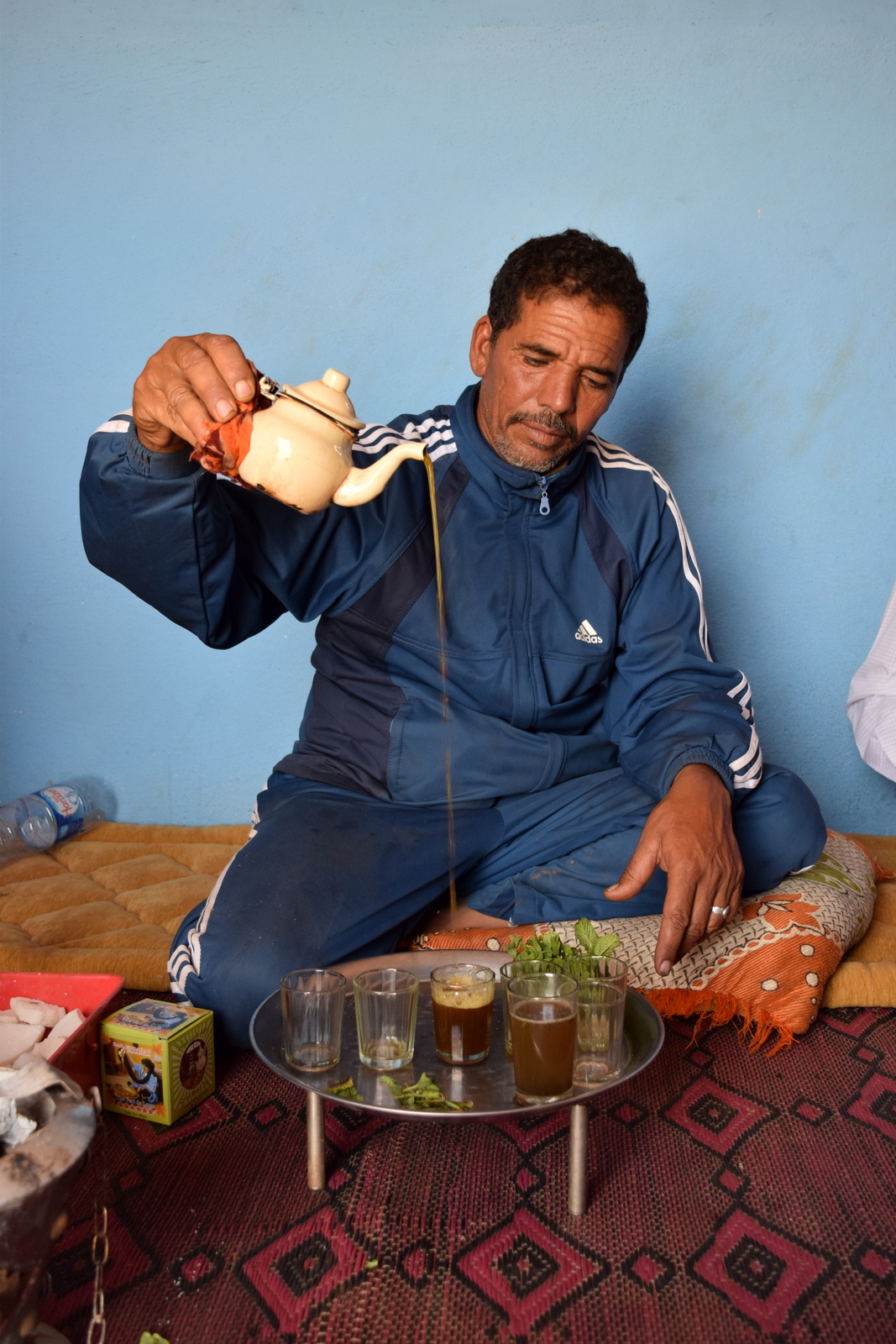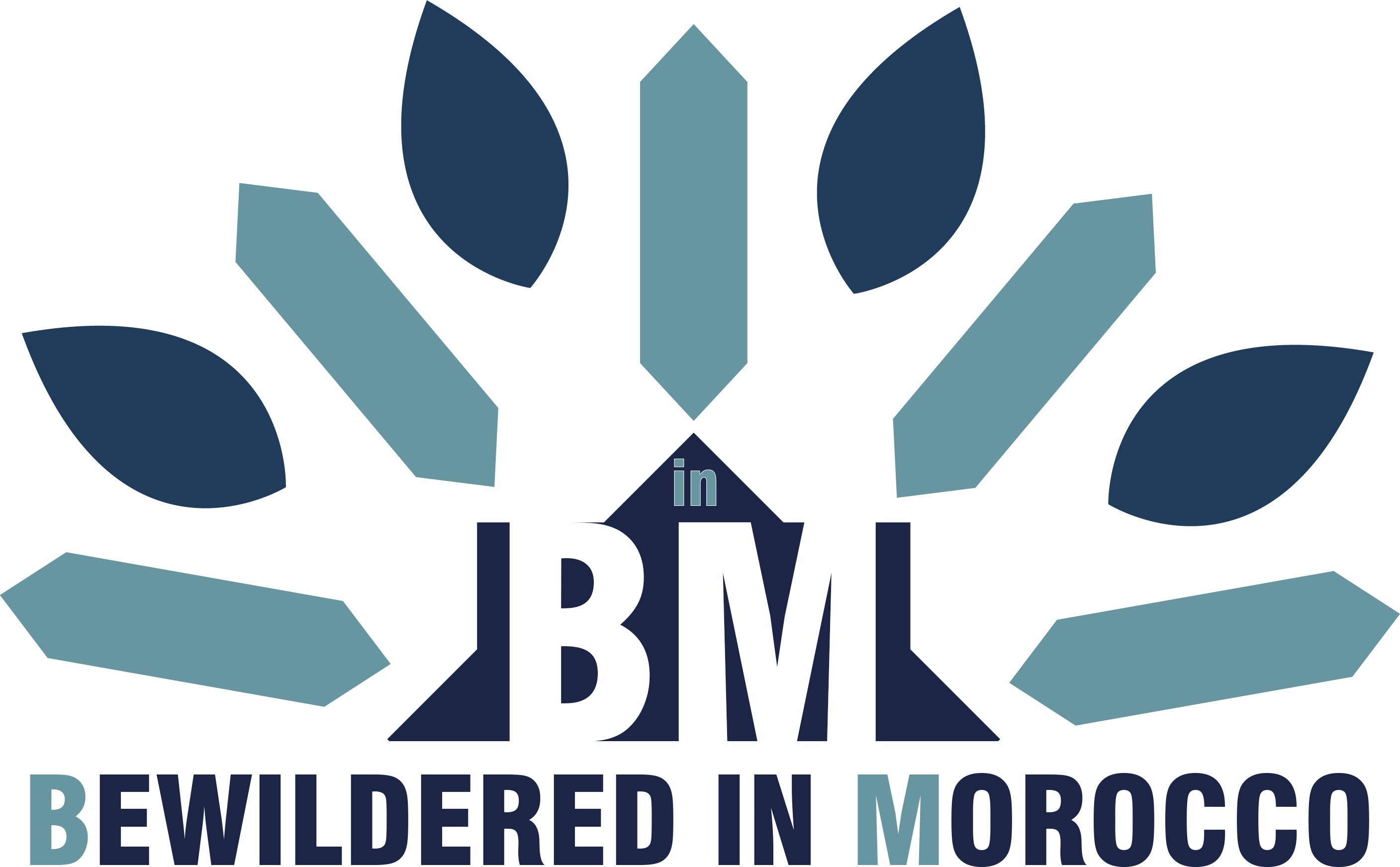I once heard from an old Moroccan lady in the bustling souks of Marrakech that:
"drinking mint tea in Morocco is not an activity, it's a lifestyle."
After more than a decade of living in this enchanting country, I couldn't agree more. There's something almost magical about the ritual of preparing and sharing mint tea – or atay as it's called in Darija – that goes far beyond simply quenching your thirst.
Whether you're sitting cross-legged on colorful carpets in a Berber tent in the Sahara, negotiating prices in the medina, or simply catching up with neighbors on a rooftop terrace, mint tea is the golden thread that weaves through every meaningful moment in Moroccan life.
Why Moroccan Mint Tea is More Than Just a Drink
During my years of living alongside Moroccan families, I've witnessed firsthand how this seemingly simple beverage carries profound cultural significance. It's the first thing offered to guests, the bridge that connects strangers, and the pause that punctuates every important conversation.
The preparation itself is an art form – a meditative process that demands patience, respect, and a touch of theatrical flair. Trust me, once you've mastered the technique, you'll understand why Moroccans take such pride in their tea-making skills.

It's time for some tea.
The Essential Ingredients for Authentic Moroccan Mint Tea
Before we dive into the preparation, let's talk about what makes authentic Moroccan mint tea so special. The magic lies in three simple yet crucial ingredients:
Gunpowder Green Tea (Thé Vert): This isn't your average green tea. Look for the small, tightly rolled pellets that unfurl beautifully when steeped. The quality here makes all the difference – don't skimp!
Fresh Mint (Na'ana): Spearmint is traditional, but any fresh mint will work. The key is using generous handfuls – more than you think you need. The mint should be vibrant, aromatic, and free from wilted leaves.
White Sugar: Yes, you read that right. Moroccan mint tea is sweet – really sweet. While it might seem excessive to Western palates, the sugar balances the bitterness of the green tea and complements the mint perfectly.

breakfast in the souk
How to Prepare Perfect Moroccan Mint Tea: Step by Step
Here's the traditional method I learned from watching countless Moroccan women (and men!) perfect their craft:
Step 1: Extract the Tea Essence
Add one heaping teaspoon of gunpowder green tea per cup of water to your teapot. Pour in a small amount of boiling water – just enough to cover the tea leaves. Let it stand for 30 seconds, then pour this concentrated essence into a separate glass and set aside. This liquid gold captures the pure essence of the tea.
Step 2: Wash Away the Bitterness
Add another small amount of water to the pot and swirl for about a minute. You'll notice the water turns dark and has a bitter taste – this is exactly what we want to remove. Discard this water completely.
Step 3: Build the Perfect Blend
Return the tea essence to the pot. Add a generous handful of fresh mint – don't be shy! Then comes the sugar. Add more than you think you could ever need (typically 5-7 sugar cubes per liter). Top with boiling water, leaving some space at the top.
Step 4: The Magic of Cooking
Place the pot on a gas burner or stove and let it simmer for 2-3 minutes. This step dissolves the sugar completely and allows the flavors to marry beautifully.
Step 5: The Art of Aeration
Here comes the most spectacular part – and the one that separates amateurs from masters. Hold the teapot high above a glass (about 12 inches) and pour in a steady stream. The tea should foam as it hits the glass. Pour the tea back into the pot and repeat this process 3-4 times until the tea becomes frothy and aromatic.
This aeration isn't just for show – it actually improves the taste by mixing the ingredients and cooling the tea to the perfect drinking temperature.

The Cultural Significance I've Witnessed
During my stays with Moroccan families across the country – from the Atlas Mountains to the coastal towns – I've observed that mint tea preparation is often a communal activity. Children learn by watching, teenagers perfect their pouring technique, and elders share stories while the tea steeps.
In the Sahara, I've watched nomads create this liquid magic using nothing but a small gas burner and basic equipment, proving that good tea isn't about fancy tools – it's about understanding the process and respecting the tradition.

Pro Tips from a Decade in Morocco
Timing is Everything: The best mint tea happens when you're not rushing. Allow yourself to enjoy the process – it's part of the experience.
Glassware Matters: Traditional small glasses aren't just pretty – they're designed to showcase the tea's beautiful amber color and allow the aroma to concentrate.
Fresh is Best: Pick your mint in the morning when the oils are strongest, or buy the freshest sprigs you can find in the market.
Test Before Serving: Always taste your tea before serving to guests. Adjust the sweetness if needed – it should be sweet enough to make you smile.
When and Where to Enjoy Your Perfect Mint Tea
Mint tea isn't bound by time – it's equally perfect with breakfast pastries like chebakia or msemen, as an afternoon pick-me-up, or as a digestive after a hearty tagine dinner.
I love serving it on my terrace during sunset, watching the light fade over the medina while the sweet, minty aroma fills the air. It's in these moments that I truly understand what that wise woman meant about tea being a lifestyle.
A Final Thought from My Moroccan Journey
Learning to make proper Moroccan mint tea was one of my first real connections to this country's culture. It taught me patience, showed me the importance of hospitality, and gave me a way to connect with people regardless of language barriers.
Whether you're planning to visit Morocco or simply want to bring a taste of this magical country into your home, mastering the art of mint tea preparation is a beautiful way to honor this rich tradition.
Have you tried making Moroccan mint tea at home? I'd love to hear about your experiences in the comments below! And if you're planning a trip to Morocco, don't miss my guides to the nomads of the Sahara and the hidden gems of Guelmim.
